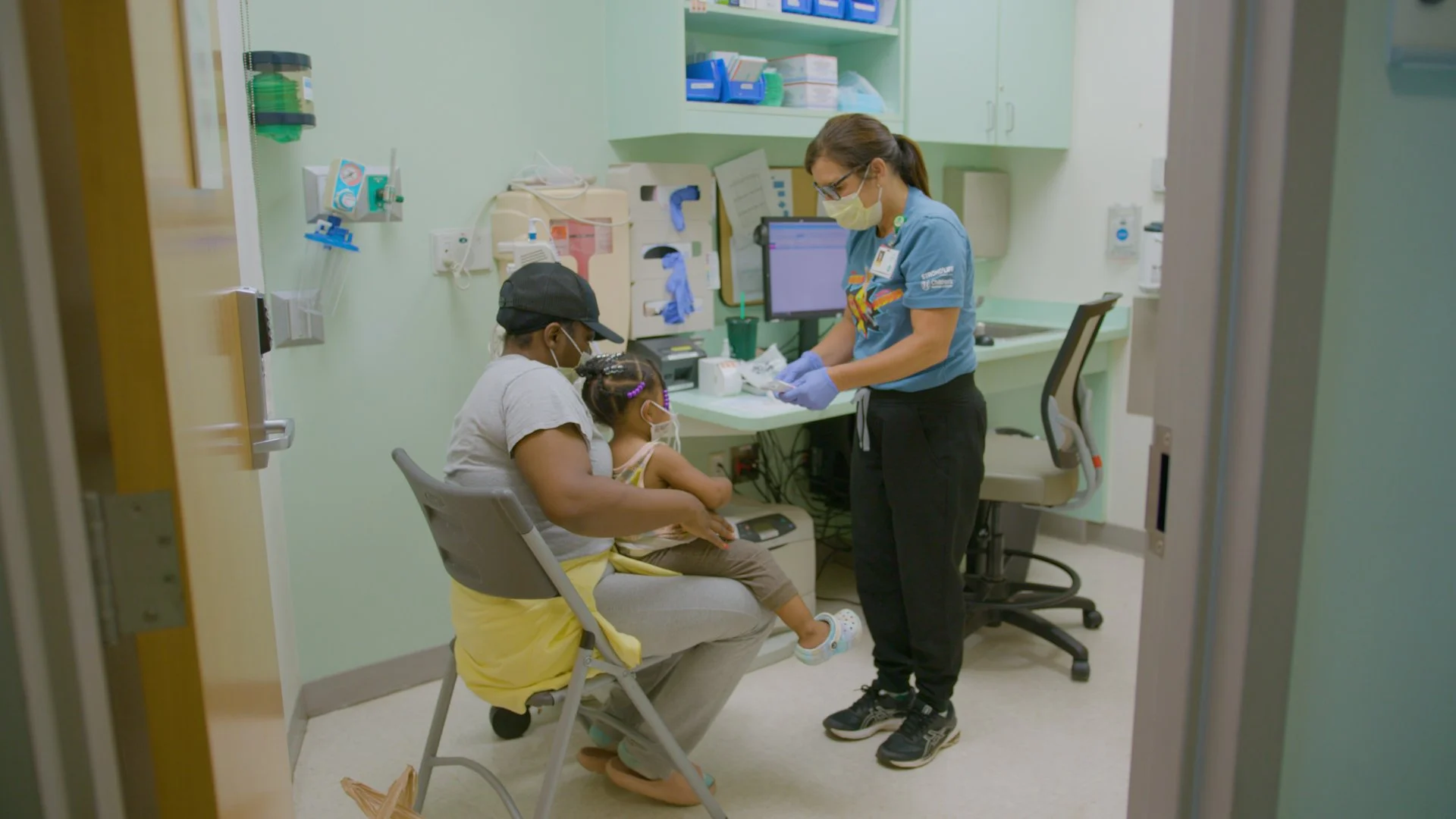Fulfilling a Dream: From Executive to EMT
Like many at the height of the COVID-19 pandemic, Linda Matzigkeit was desperate to help. Unlike many, Matzigkeit, the chief administrative officer at Children’s Healthcare of Atlanta, got trained to serve as an emergency medical technician.
“I had wanted a clinical profession since I was in the seventh grade,” said Matzigkeit, 56. “I started college as a pharmacy student, but the biology, organic chemistry and such were overwhelming. I changed my major to healthcare administration. I worked for a consulting firm after college and almost left to return to school to become a nurse when I was offered my current role at Children’s. I thought, hmmm, maybe this is the way I’ll get closer to the clinical side.”
Matzigkeit has worked at Children’s for 20 years. In her executive role, she oversees most of the support departments, including human resources, marketing, legal, and employee and patient wellness. She leads a team of five vice presidents and 400 staff members.
When the pandemic hit, Matzigkeit watched many employees leave their jobs.
“Things were so uncertain, people were scared and had their families to worry about. Many females left the workforce to stay home with their families, and we were understaffed,” said Matzigkeit. “We asked staff in all positions to help fill different roles, like delivering food and cleaning rooms. Seeing the staff so stressed and scared made me feel helpless. I wanted to do more.”
Matzigkeit researched options to become a trained EMT. She chose Grady EMS Academy.
“It’s the most intensive program,” said Matzigkeit. “They have great instructors who are paramedics, their very own facility, and you must pass an entrance exam to get in. There is a high level of rigor and I prepared for months.”
She was accepted into the academy in October 2021 in a class of 26 students. It’s a six-month program, two nights a week from 5-10 p.m., followed by clinical rotation in the Grady Emergency Department and ambulances.
“My husband and son were a little nervous, but very supportive because they knew clinical work had been a lifelong dream of mine,” said Matzigkeit. “They were the only ones who knew I was doing this. I didn’t want anyone else to know until after I was licensed. I guess I had a little fear of failure.”
Matzigkeit describes the Grady EMS Academy as one of the most incredible experiences of her life.
“It was eye-opening to see the work they do at Grady,” said Matzigkeit. “It’s such an asset for our community and I’m so grateful Grady exists.”
Her stint in the ambulance was tough physically, requiring a lot of rushing and lifting. Matzigkeit cared for stroke victims, heart attack patients and the victim of a stabbing. One critical patient asked her to call his mother. That hit hard.
“I thought of my son a lot while caring for patients,” said Matzigkeit. “I thought about how I’d want a person to do all they could to care for him. I wanted to do all I could for my patients.”
Matzigkeit worried she’d be queasy at the sight of blood, but quickly realized it wouldn’t be an issue.
“You’re laser-focused when you are trying to save someone’s life and nothing like that matters,” said Matzigkeit.
When Matzigkeit graduated and received her EMT license, she went to her boss, Children’s CEO Donna Hyland, shared her secret, and asked if Children’s might hire her as an EMT for the emergency department.
“She was baffled that I went to school and did my job at the same time. She was also incredibly supportive,” said Matzigkeit.
Matzigkeit had to train for 100 hours in the Children’s emergency department, which equated to about 10 shifts. She was incognito during this training. No one knew about her day job.
“It was helpful for me to just be another staff member. I didn’t want to be treated differently. I wanted to work and learn like everyone else,” said Matzigkeit.
Her preceptor (instructor) was 22, the same age as Matzigkeit’s son.
“It was humbling, for sure,” said Matzigkeit. “She could run circles around me. She was amazing.”
As a mother, she found that taking care of babies and toddlers, and witnessing parents’ emotions, was much more difficult than caring for adults, but it was also very rewarding. She completed the training in fall 2022 and now works an average of one shift a month in the Children’s emergency department. She is also able to provide unique, helpful insight to how Children’s can better serve their employees.
“This experience helps me be a better leader,” said Matzigkeit. “I see now that these nurses are too busy to read e-mails. We need to find better ways to communicate with them. I see how important a preceptor is, how important it is to have a frontline manager checking in on the staff. I’m so grateful for the perspective I gained. I’m so happy I achieved this dream of mine and that now I get to take care of patients.”

